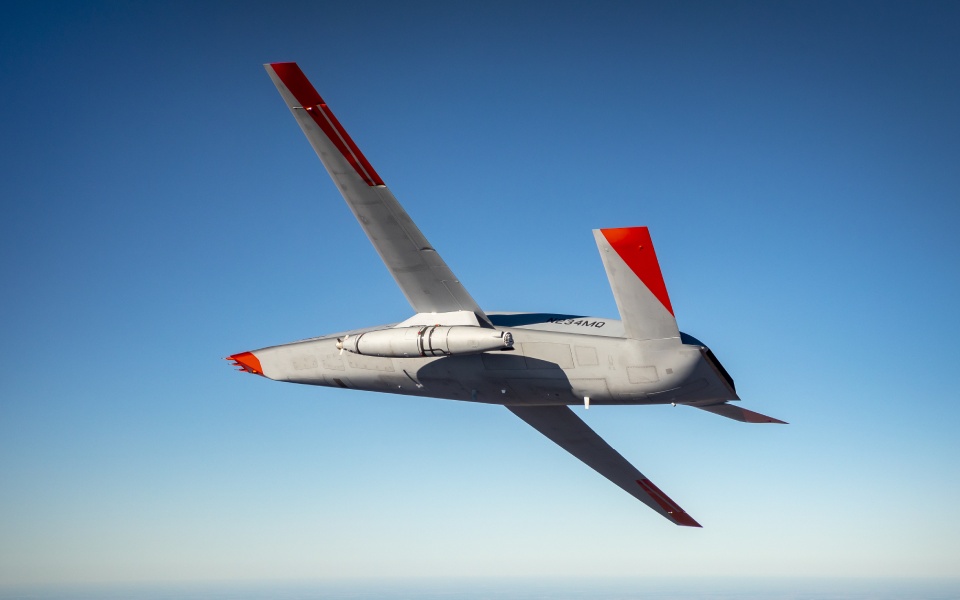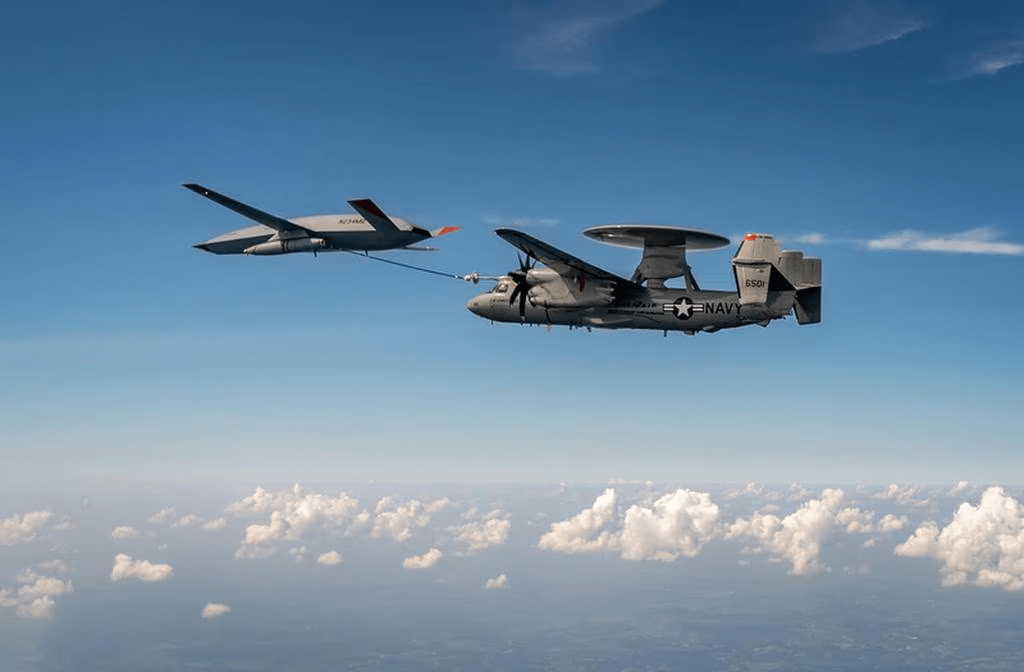Boeing, a US-based aerospace giant, is pushing the boundaries again with its latest proposal for the Navy’s MQ-25 Stingray drone. While the MQ-25 hasn’t yet graced carrier decks, Boeing is already eyeing upgrades that could redefine its role in naval operations.
During the recent Sea Air Space conference, Boeing showcased a transformative concept for the MQ-25, presenting a variant armed with two Lockheed Martin Long Range Anti-Surface Missiles.
This move marks a significant departure from the drone’s original design as a mere aerial refueler, hinting at its potential to undertake diverse missions ranging from surveillance to targeted strikes against enemy assets.
Troy Rutherford, Boeing’s MQ-25 program manager, emphasized the versatility inherently embedded in the MQ-25 design. “The capability to haul weapons or sensors is inherently still built in the airplane,” he explained. “It’s just not something that’s currently activated.”
While the primary focus remains on fielding the MQ-25 as a tanker, Boeing and the Navy are engaging in discussions to explore alternative configurations that align with the evolving needs of modern warfare.

Rutherford indicated that these talks are laying the groundwork for envisioning the “air wing of the future.” According to the US Navy, the MQ-25 program is intended to prepare future multi-mission UAVs [unmanned aerial systems] to keep pace with emerging threats.
The MQ-25 Stingray project’s roots go back to 2006, when the Navy sought a carrier-based unmanned aerial vehicle (UAV) capable of stealth operations and precision strikes.
Boeing’s MQ-25 Stingray took flight for the first time on September 19, 2019, marking a significant milestone in naval aviation. By 2021, the MQ-25 T1 test asset was successfully deployed aboard the USS George H.W. Bush Nimitz-class supercarrier, showcasing its potential in real-world scenarios.
Later, on June 4, 2021, the MQ-25 Stingray successfully executed its inaugural aerial refueling mission, supplying 325 pounds of fuel to an F/A-18F Super Hornet. Earlier this year, the US Navy took delivery of the first MQ-25 Stingray autonomous refueler from Boeing, further solidifying the drone’s path toward operational readiness.

US Navy To Procure 76 MQ-25s
As the United States Navy charts a course toward modernization, introducing uncrewed aircraft systems (UAS) onto its carrier decks presents a unique challenge.
Unlike their counterparts in other military branches, Navy aircraft must contend with catapult-assisted take-off and barrier-arrested recovery complexities. Despite these hurdles, the Navy’s MQ-25 Stingray emerges as a pioneering solution, marking the service’s inaugural foray into operational carrier-based UAS capabilities.
Designed to integrate seamlessly into carrier operations, the MQ-25 Stingray mirrors the launch and recovery procedures of crewed fighters like the Boeing F/A-18 and Lockheed Martin F-35C.
However, what sets the Stingray apart is its autonomous nature, which is devoid of onboard or remote pilots. Leveraging advanced flight control algorithms and planning software, the MQ-25 executes missions and safely returns to the carrier autonomously, heralding a new era of unmanned aerial operations at sea.
One of the primary roles assigned to the MQ-25 is aerial refueling, a task currently fulfilled by F/A-18 Super Hornets repurposed as ad hoc tankers. The Navy has outlined plans to procure 76 MQ-25s, including test ones, with a budget allocation of $553 million for three aircraft in fiscal 2025.

According to the most recent timeline, the Navy aims to achieve initial operational capability for the MQ-25 fleet by the latter part of 2026, with the delivery of 13 aircraft. Future projections indicate the delivery of three aircraft annually until 2027, followed by an increase in annual procurement. Budget documents also suggest the purchase of seven MQ-25s in 2029.
Beyond its role in aerial refueling, the MQ-25 boasts versatility in performing intelligence, surveillance, and reconnaissance (ISR) missions, adding a valuable dimension to naval operations.
Test flights have already demonstrated the drone’s capability to refuel various aircraft, including the F/A-18, F-35C, and Northrop Grumman E-2D Hawkeye, showcasing its compatibility with diverse air wing configurations.
Overall, the MQ-25 Stingray is poised to become a cornerstone of naval aviation, supporting the air wings on both Nimitz—and Ford-class aircraft carriers.
The MQ-25’s functionalities in aerial refueling and intelligence, surveillance, and reconnaissance (ISR) will revolutionize carrier-based unmanned aviation, enhancing the Navy’s combat readiness and prolonging the operational lifespan of its multi-role strike fighter fleet.
- Contact the author at ashishmichel(at)gmail.com
- Follow EurAsian Times on Google News




